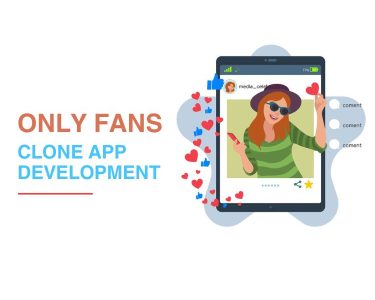How to Use Social Media for Product Launches
Social media has revolutionized the way businesses introduce new products to the market. Leveraging platforms like Facebook, Instagram, Twitter, and LinkedIn enables companies to reach a vast audience, generate buzz, and drive engagement around their product launches. This article explores effective strategies, benefits, implementation tips, and the role of analytics in utilizing social media for successful product launches.
Launching a new product in today’s digital landscape requires more than just a press release. Social media offers a direct line of communication with potential customers, influencers, and industry stakeholders, making it an invaluable tool for creating anticipation and excitement around new offerings. This article outlines key strategies and best practices for leveraging social media effectively throughout the product launch lifecycle.
Benefits of Using Social Media for Product Launches
- Audience Reach and Engagement: Social media enables businesses to connect with a global audience instantly. Platforms like Instagram and Facebook allow for visually engaging content that can showcase product features, benefits, and use cases, capturing the attention of potential customers and encouraging interaction through likes, shares, and comments.
- Real-Time Feedback and Market Validation: Launching a product on social media provides immediate feedback from customers and followers. Through comments, direct messages, and social media analytics, businesses can gauge initial market reception, identify potential issues, and iterate quickly based on user responses, ensuring the product meets customer expectations.
- Cost-Effectiveness and Targeting: Compared to traditional marketing channels, social media offers cost-effective options for targeting specific demographics, interests, and behaviors. Paid advertising on platforms like LinkedIn or Twitter allows businesses to reach niche audiences likely to be interested in the new product, optimizing ad spend and maximizing ROI.
- Brand Awareness and Visibility: Social media product launches can significantly increase brand visibility and awareness. By leveraging hashtags, influencer partnerships, and viral content strategies, businesses can amplify reach and create a buzz around the launch, driving organic traffic and media coverage.
- Data-Driven Insights and Optimization: Social media analytics provide valuable insights into campaign performance, audience demographics, and content engagement metrics. By analyzing these data points, businesses can refine their messaging, adjust targeting strategies, and optimize future product launches based on actionable insights and trends.
Strategies for Effective Social Media Product Launches
- Pre-Launch Teasers and Countdowns: Build anticipation by teasing product features, benefits, or sneak peeks through teaser campaigns on social media. Use countdowns, behind-the-scenes footage, and interactive polls to engage followers and create excitement leading up to the launch day.
- Influencer Partnerships and Collaborations: Collaborate with influencers and industry experts who align with your brand values and target audience. Engage influencers in unboxing videos, reviews, or live demonstrations to leverage their credibility and reach, extending the product’s visibility to their followers.
- Interactive Content and Contests: Encourage user participation through interactive content such as quizzes, polls, and contests related to the new product. User-generated content (UGC) contests or challenges can foster community engagement and virality, driving organic reach and brand advocacy.
- Live Streaming and Virtual Events: Host live streaming events or virtual product launches on platforms like Facebook Live, Instagram Live, or YouTube. Showcase product demonstrations, Q&A sessions with experts, and customer testimonials in real-time, allowing viewers to engage directly and ask questions.
- Post-Launch Engagement and Customer Support: Maintain momentum post-launch by continuing to engage with customers through social media. Respond promptly to inquiries, feedback, and reviews, demonstrating a commitment to customer satisfaction and fostering ongoing relationships beyond the initial launch phase.
Maximizing Viral Potential and Trend Amplification
Social media offers unparalleled opportunities to maximize viral potential and amplify trends during product launches. Platforms like Twitter excel in leveraging real-time updates and trending topics to generate buzz and engage with a broad audience. By utilizing trending hashtags, participating in relevant conversations, and encouraging user-generated content (UGC), businesses can harness viral marketing effects that propel their product launches into the spotlight. Leveraging the power of social sharing and peer recommendations amplifies reach organically, fostering community excitement and driving immediate engagement around the new product.
Leveraging User-Generated Content (UGC) for Authenticity
User-generated content (UGC) plays a pivotal role in enhancing authenticity and credibility during product launches. Encouraging customers to share their experiences, unboxing videos, or testimonials on social media creates a community-driven narrative that resonates with potential buyers. Platforms like Instagram, where visual content thrives, are ideal for showcasing UGC that highlights real-life product usage and customer satisfaction. Businesses can repost UGC, feature customer stories in ads, or run UGC contests to incentivize participation and amplify brand advocacy, leveraging peer influence to drive conversions and brand loyalty.

Implementing Integrated Marketing Strategies
Successful product launches on social media often integrate multiple marketing channels and strategies to maximize impact. Beyond organic posts and paid advertising, businesses can leverage email marketing, influencer partnerships, and cross-platform promotions to create a cohesive and Omni channel experience for consumers. Aligning social media efforts with offline events, press releases, and influencer activations enhances brand visibility across touchpoints, reinforcing key messaging and driving sustained engagement throughout the launch campaign. Integrated marketing strategies ensure a holistic approach that reaches diverse audience segments and maximizes ROI through coordinated efforts and consistent brand messaging.
Competitive Analysis: Social Media Platforms for Product Launches
| Platform | Advantages | Examples of Successful Campaigns | Analysis |
| Visual storytelling; engagement-driven audience | Apple’s iPhone launches | Instagram’s visually-rich platform and engagement focus make it ideal for showcasing products through compelling visuals and stories. | |
| Broad audience reach; targeted advertising options | Oculus Rift VR headset launch | Facebook’s extensive targeting capabilities and ad formats allow for precise audience segmentation and broad reach for product launches. | |
| Real-time updates; trending topics | Wendy’s spicy chicken nuggets comeback | Twitter’s real-time engagement and trending topics can amplify product launches, leveraging viral potential and immediate customer feedback. | |
| Professional networking; B2B audience | Microsoft Surface Pro launches | LinkedIn’s business-focused platform is effective for B2B product launches, targeting decision-makers and industry professionals. |
Analysis Table: Comparison of Social Media Platforms for Product Launches
| Platform | Advantages | Examples of Successful Campaigns | Analysis |
| Visual storytelling; engagement-driven audience | Apple’s iPhone launches | Instagram’s visually-rich platform and engagement focus make it ideal for showcasing products through compelling visuals and stories. | |
| Broad audience reach; targeted advertising options | Oculus Rift VR headset launch | Facebook’s extensive targeting capabilities and ad formats allow for precise audience segmentation and broad reach for product launches. | |
| Real-time updates; trending topics | Wendy’s spicy chicken nuggets comeback | Twitter’s real-time engagement and trending topics can amplify product launches, leveraging viral potential and immediate customer feedback. | |
| Professional networking; B2B audience | Microsoft Surface Pro launches | LinkedIn’s business-focused platform is effective for B2B product launches, targeting decision-makers and industry professionals. |
Analysis
- Audience Targeting and Reach: Each platform offers unique advantages in terms of audience demographics and reach. Instagram excels in visual content for consumer products, while LinkedIn targets professionals and decision-makers in B2B sectors.
- Ad Formats and Engagement: Platforms like Facebook and Instagram offer visually engaging ad formats such as carousel ads and stories, enhancing product visibility and engagement. Twitter’s real-time updates and trending topics can amplify reach through viral content and immediate customer interaction.
- Campaign Examples: Successful launches such as Apple’s iPhone on Instagram showcase effective use of visual storytelling and influencer collaborations to build anticipation and drive sales. LinkedIn’s B2B campaigns highlight targeted messaging and thought leadership content for industry-specific launches.
- ROI and Performance Metrics: Measure campaign success through metrics such as engagement rates, conversion rates, and ROI. Analyze platform-specific analytics to optimize ad spend, refine targeting strategies, and improve future product launch initiatives based on data-driven insights.
- Influencer Partnerships: Evaluate influencer reach, engagement rates, and alignment with brand values to maximize impact and credibility during product launches. Collaborations with influencers on platforms like Instagram and YouTube can drive authenticity and consumer trust, influencing purchasing decisions.
- Customer Feedback and Iteration: Use social media monitoring tools to gather real-time feedback, sentiment analysis, and customer insights post-launch. Iterate product features, marketing messages, and customer support strategies based on user feedback to enhance product satisfaction and loyalty.
This analysis highlights the strategic role of social media in product launches, emphasizing the importance of platform selection, audience engagement, and data-driven optimization for achieving successful outcomes. By leveraging the strengths of each platform and adopting innovative strategies, businesses can effectively leverage social media to amplify brand visibility, drive consumer engagement, and achieve impactful product launches in competitive markets.
Conclusion
In conclusion, leveraging social media for product launches offers businesses unparalleled opportunities to engage with audiences, amplify brand visibility, and drive sales. Each social media platform provides distinct advantages tailored to different marketing objectives and target demographics. Instagram excels in visual storytelling, making it ideal for consumer products that benefit from visually compelling content and influencer collaborations. Facebook’s broad reach and targeted advertising options enable precise audience segmentation and extensive reach for both B2C and B2B product launches.
Twitter’s real-time updates and trending topics facilitate immediate engagement and virality, making it effective for creating buzz around new offerings through timely interactions and trending hashtags. LinkedIn, with its professional networking focus, proves invaluable for B2B product launches targeting decision-makers and industry professionals through thought leadership content and targeted messaging.
Successful product launches on social media require strategic planning, engaging content, and data-driven insights to optimize campaign performance. By leveraging platform-specific strengths, integrating cross-channel marketing strategies, and harnessing user-generated content (UGC) and influencer partnerships, businesses can maximize reach, foster authenticity, and drive consumer engagement throughout the launch journey. Continuous monitoring, analytics, and customer feedback enable businesses to iterate and refine their strategies, ensuring sustained success and ROI in competitive market environments. Embracing social media as a cornerstone of product launch strategies not only enhances brand visibility but also cultivates meaningful customer relationships and positions businesses for long-term growth and market leadership.




